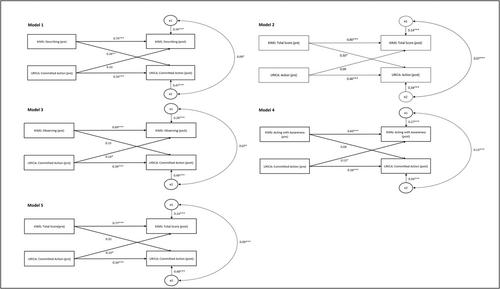Change motivation and mindfulness in individual psychotherapy: Examining a sample of adult outpatients with depression and/or anxiety
Abstract
Objectives
Existing literature has demonstrated that both motivation to change and mindfulness are associated with therapy outcomes in samples with mental disorders. Between the constructs of mindfulness and motivation to change occurs some theoretical-related and empirical overlap. However, it is still little known about the association of these two constructs. For this reason, we investigated the relationship of motivation to change and mindfulness in a sample of 116 adult outpatients with a primary diagnosis of depression or anxiety.
Methods
An outpatient sample of 116 depressive and/or anxious patients filled in the German short version of the University of Rhode Island Change Assessment (URICA-S) and the German version of the Kentucky Inventory of Mindfulness Skills (KIMS) before the start of cognitive-behavioral therapy (pre) and after the 25th cognitive-behavioral therapy session (post). To assess the association between change motivation and mindfulness, we calculated correlations, hierarchical regressions and cross-lagged panel models (CLPM).
Results
Several positive and negative significant correlations at the premeasurement time point, at the postmeasurement time point, and over time (from pre to postmeasurement time point) demonstrated a relation between the KIMS and the URICA-S. Hierarchical regression analyses and CLPM pointed towards relations between mindfulness and change motivation over time and in both directions for some subscales of the KIMS and the URICA-S.
Conclusion
A bidirectional relation between motivation to change and mindfulness was supported in our naturalistic psychotherapy setting for several subscales. For a better understanding of the interconnection between the two constructs, future research should focus on the application of interventions to improve either mindfulness or motivation to change in psychotherapy. Additionally, the interactional effects of mindfulness and change motivation on therapy outcomes should be investigated.


 求助内容:
求助内容: 应助结果提醒方式:
应助结果提醒方式:


